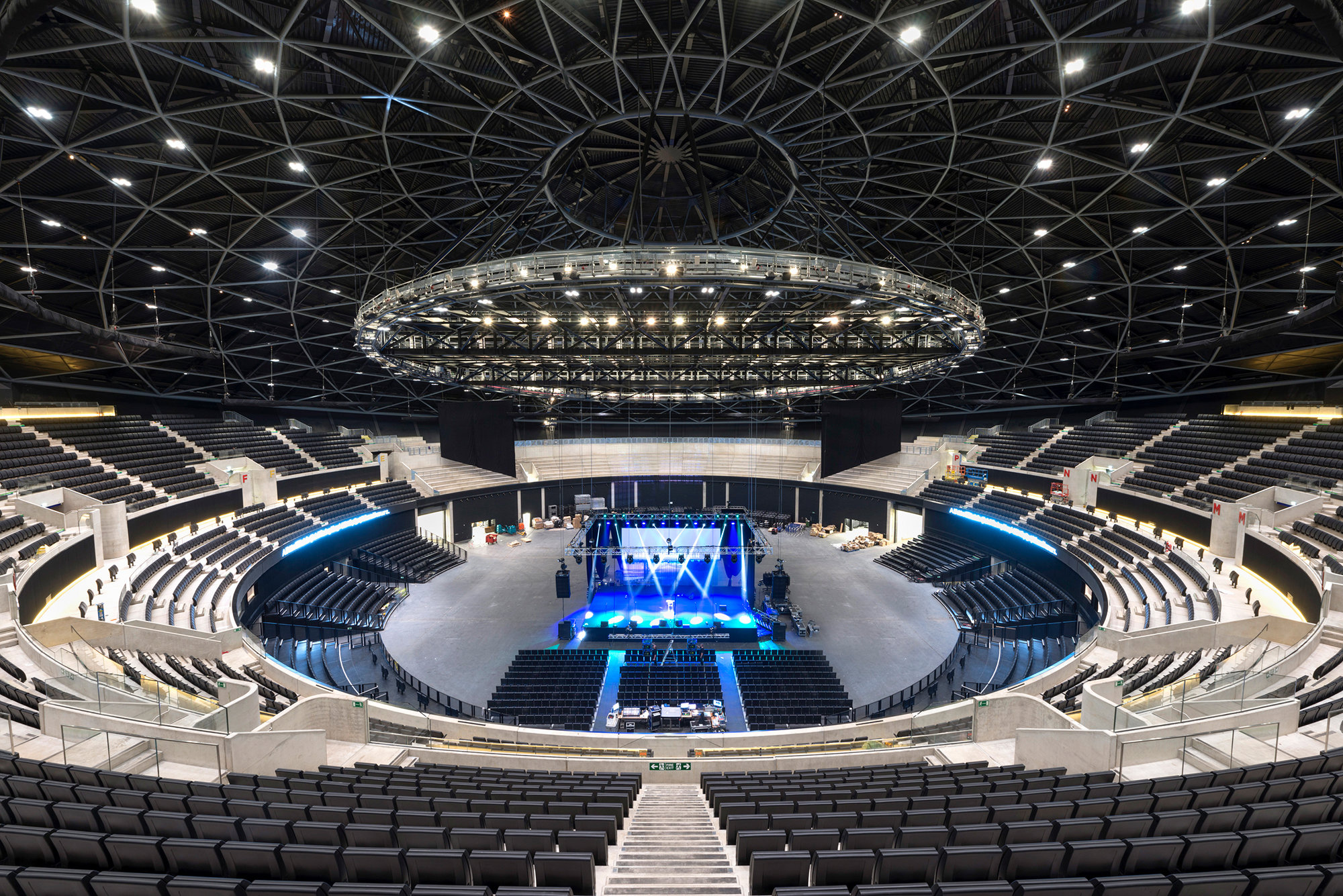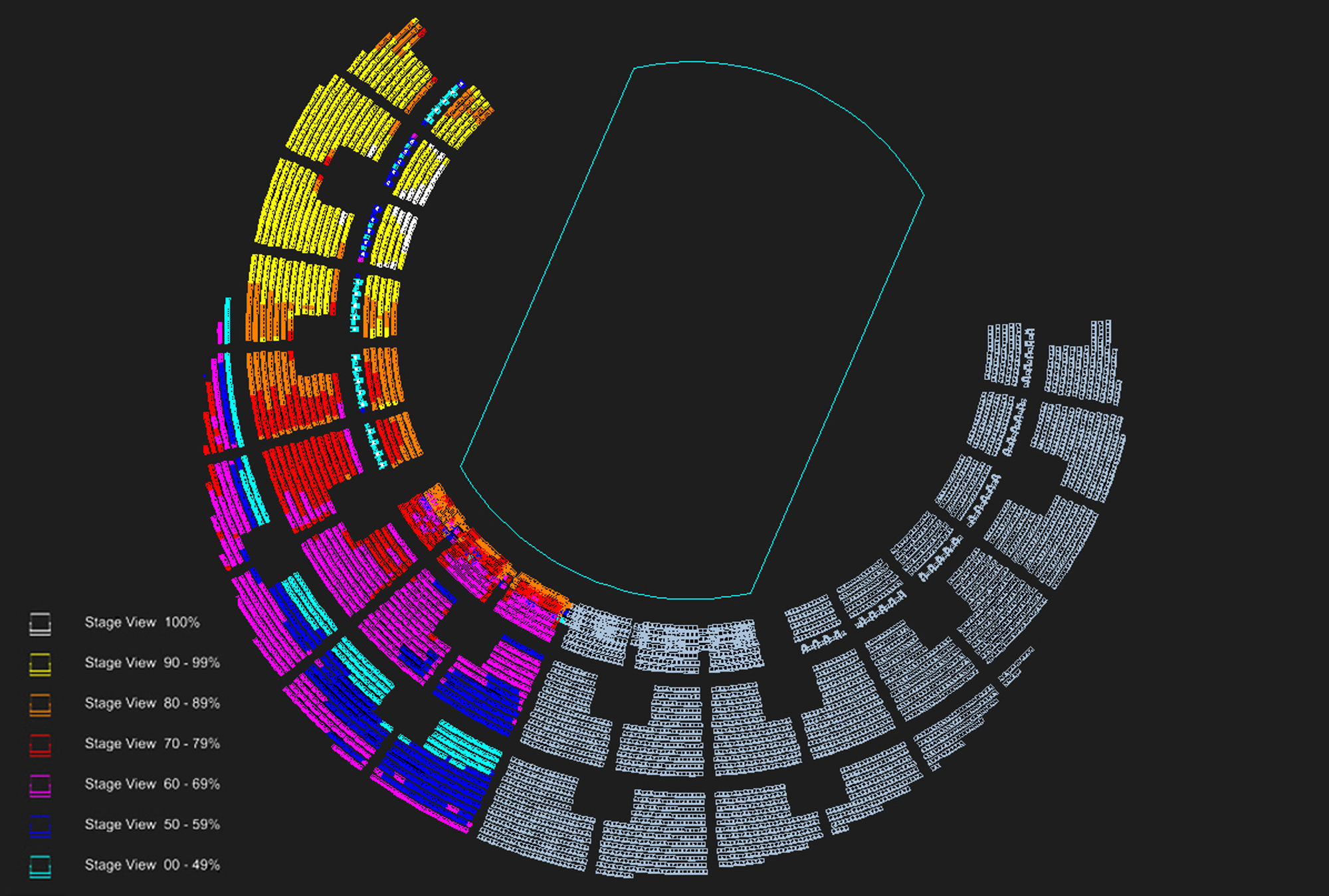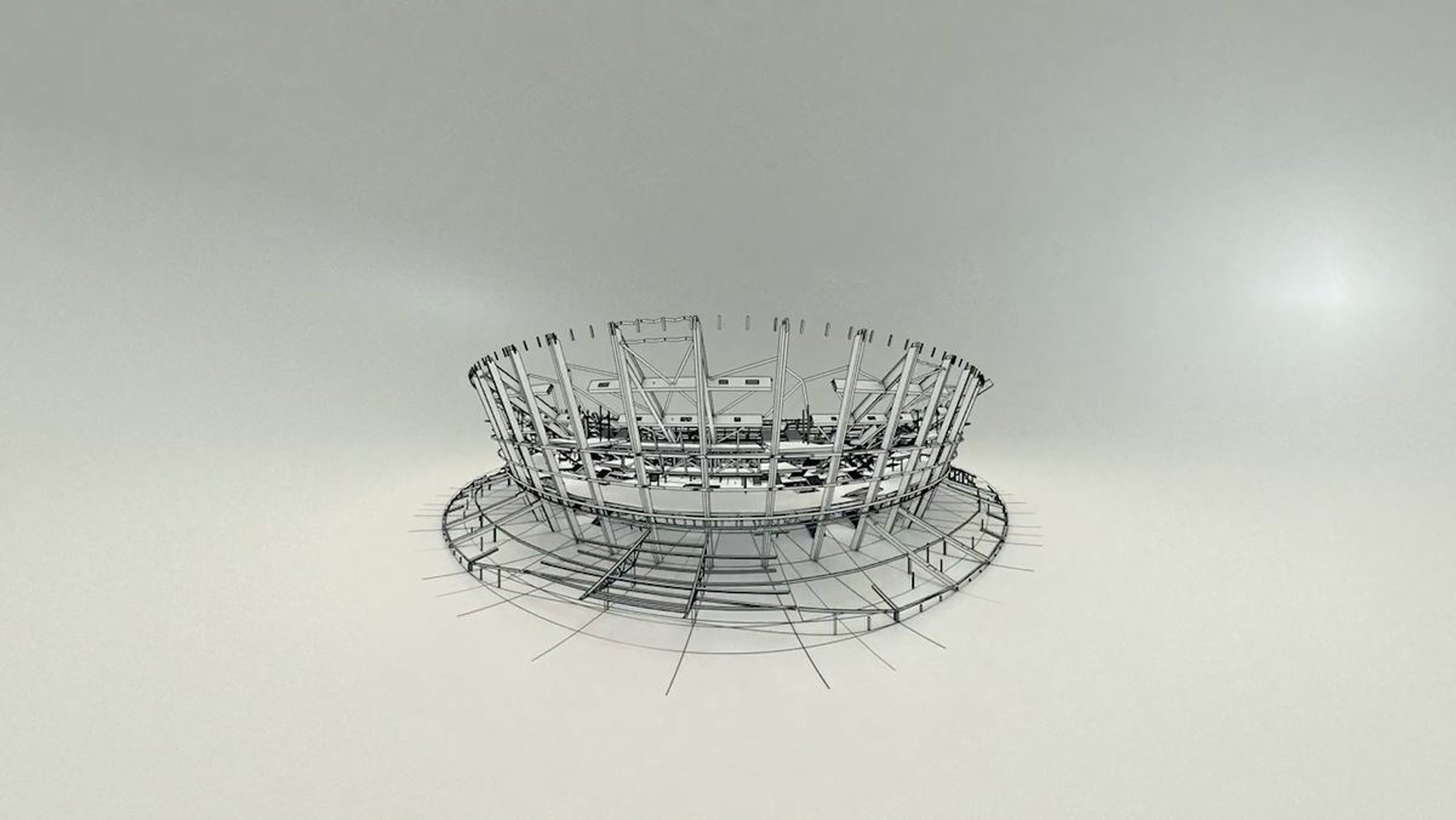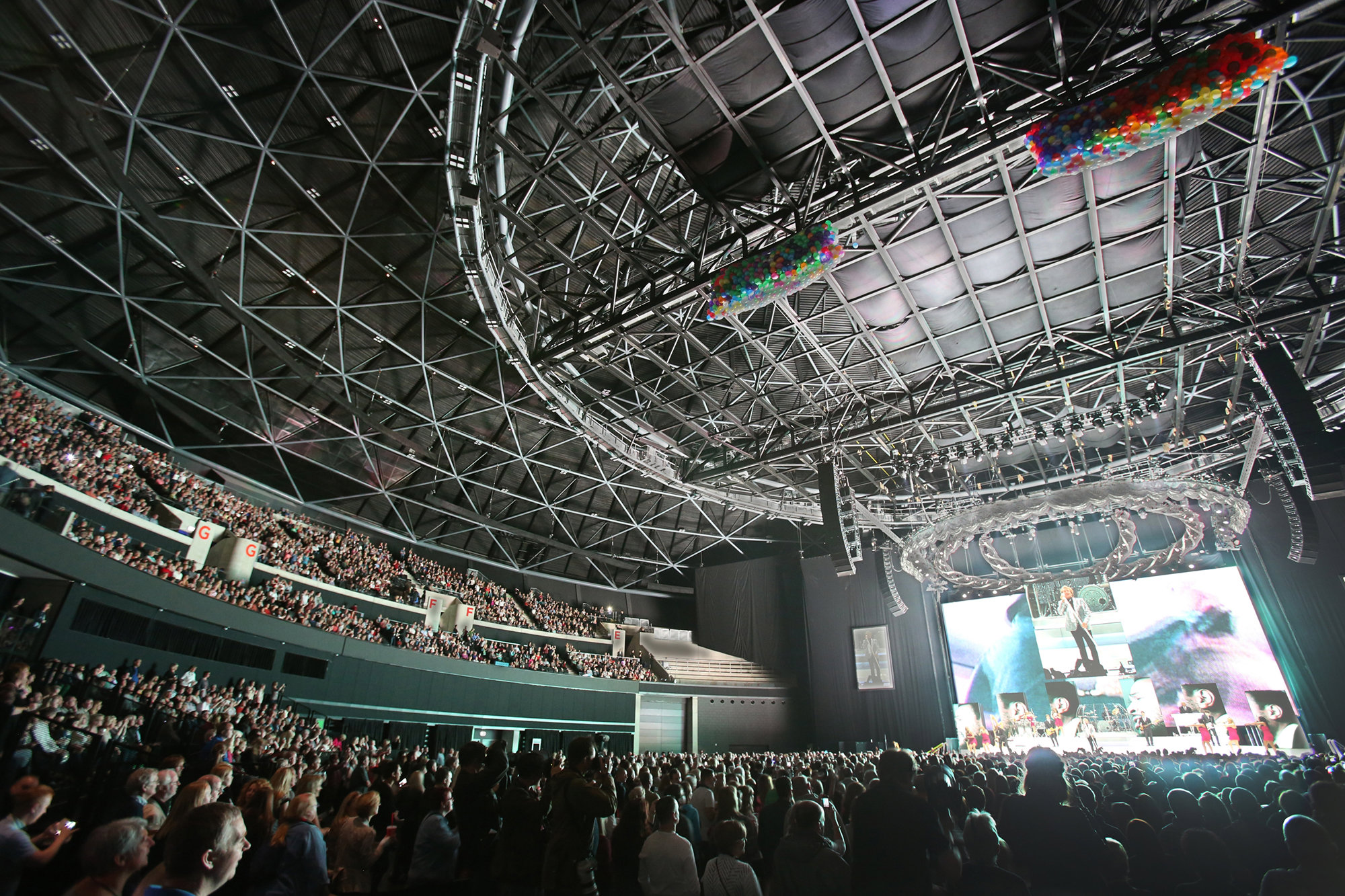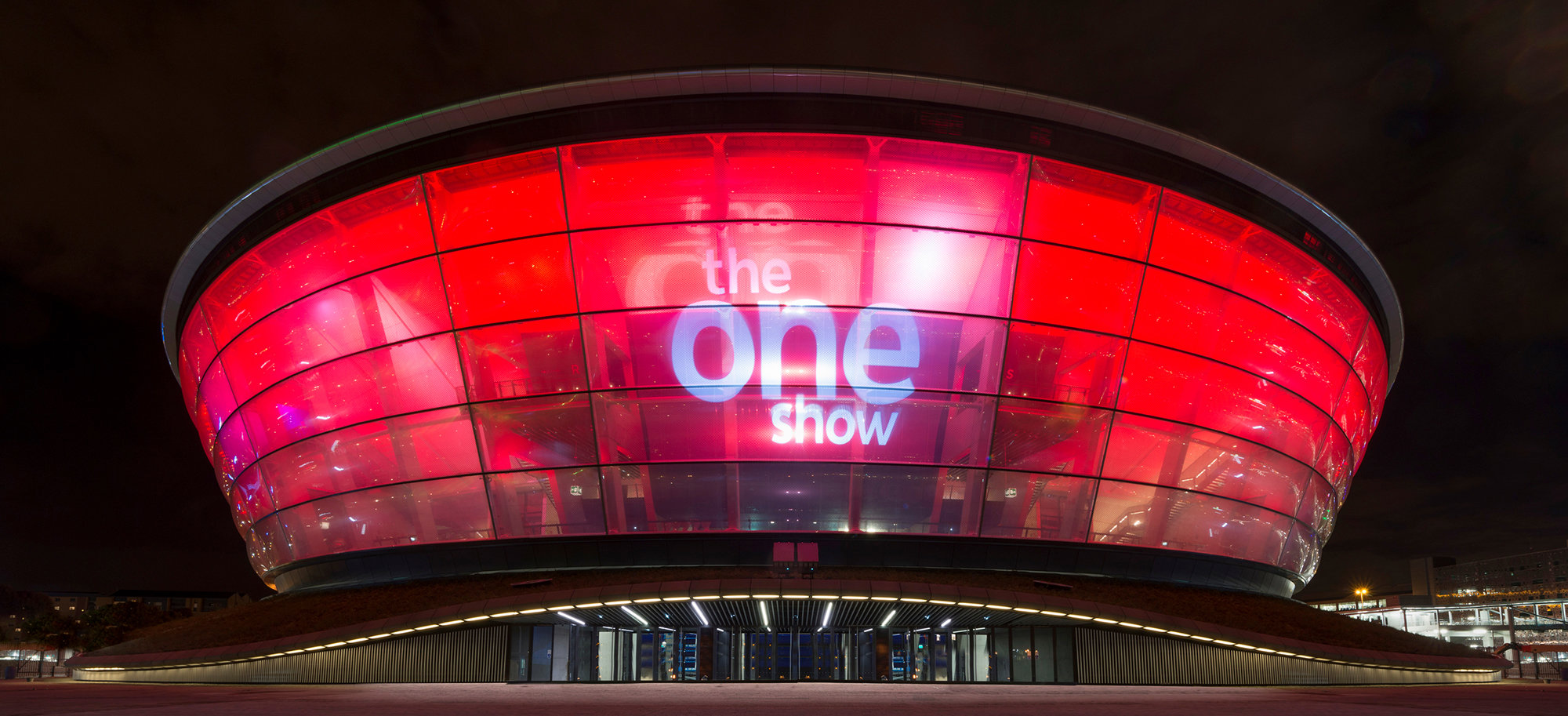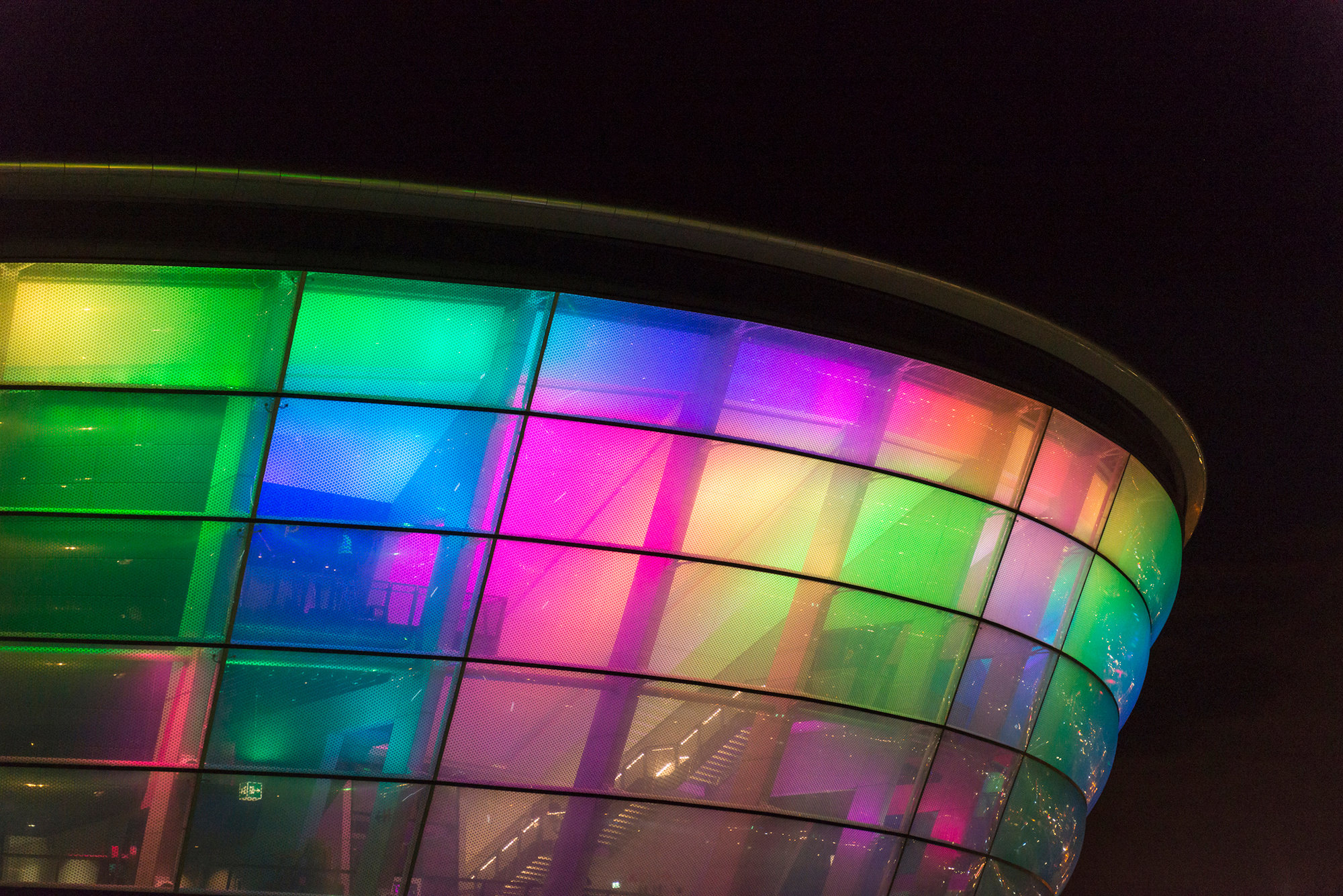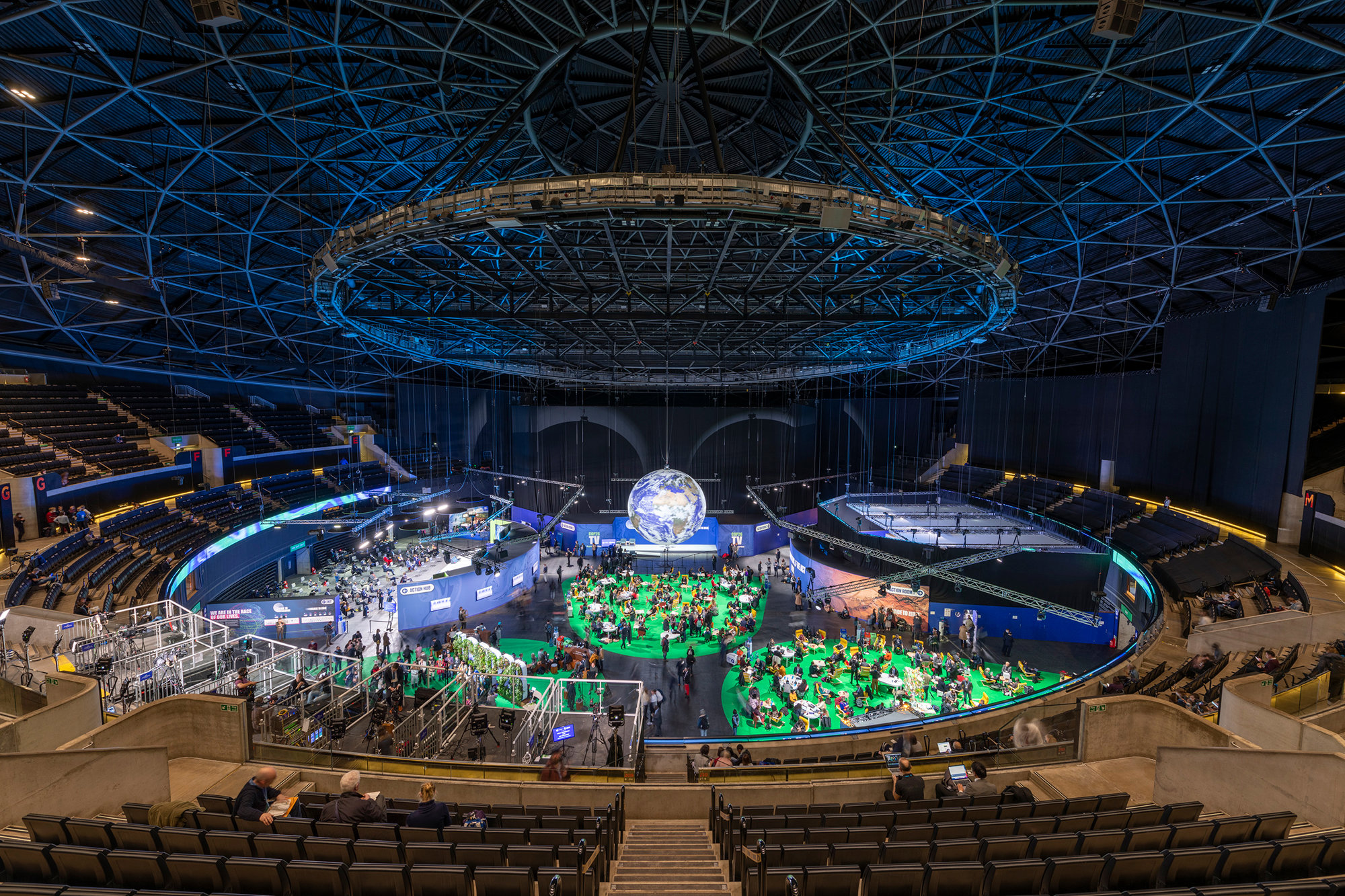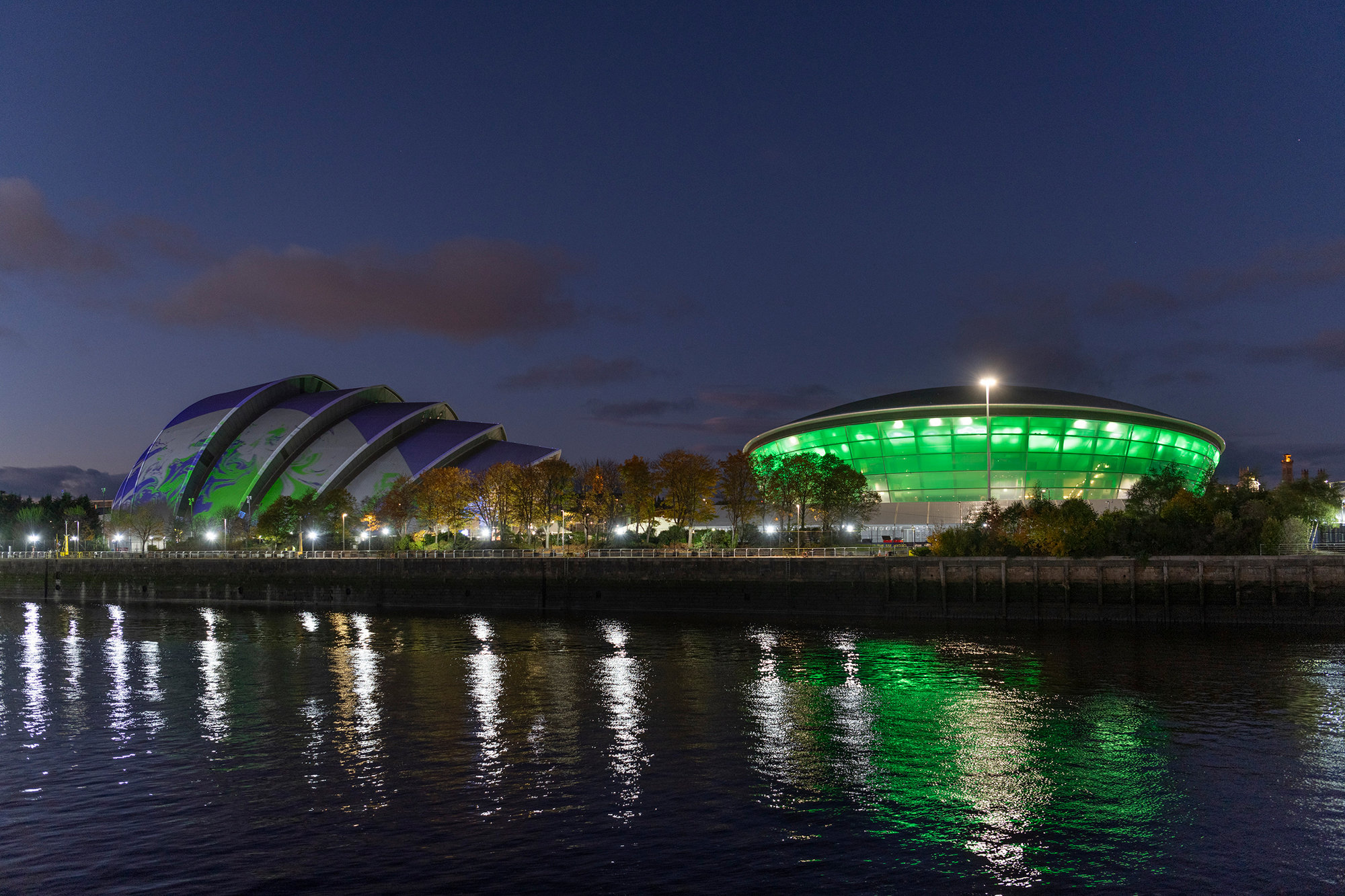The Making of… is an opportunity to reflect on Foster + Partners’ completed projects and the process of making them.
This month, the OVO Hydro (previously the SSE Hydro) celebrates its 10-year anniversary. The 12,500-capacity arena is located alongside the practice’s SEC Armadillo, on the northern edge of the River Clyde and within the redevelopment of Glasgow’s former docks.
Ben Scott, Senior Partner and Architect, and David Gillespie, Associate Partner, Architect and Design Systems Analyst, describe the process of making the building.










